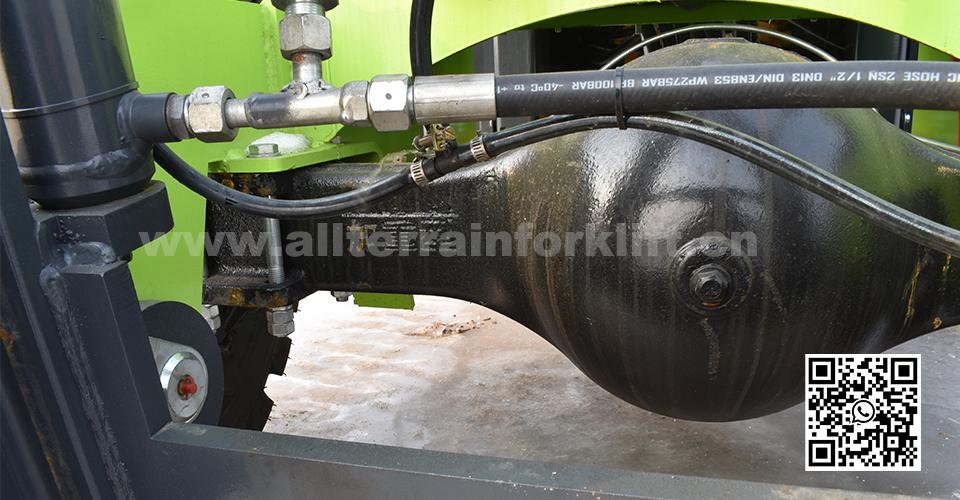News

In the dynamic world of articulated rough terrain forklifts, the axle plays a pivotal role in defining performance, stability, and maneuverability. Let's delve into the significance of these essential components that contribute to the seamless operation of these specialized forklifts.

Understanding the Axle's Role:
Weight Distribution: The axle is instrumental in distributing the weight of the forklift evenly. This equilibrium is vital for maintaining stability, especially when navigating uneven or challenging terrains.
Articulation Control: In articulated forklifts, where the vehicle is divided into two parts connected by a hinge, the axle facilitates controlled articulation. This design allows the forklift to navigate tight spaces and challenging landscapes with superior agility.
Torsional Strength: Articulated forklifts often encounter torsional stress when operating on rough terrains. The axle's robust construction provides the necessary strength to withstand these forces, ensuring durability and longevity.
Types of Axles in Articulated Forklifts:
Front Axle: Positioned between the front wheels, the front axle is crucial for front-wheel steering articulated forklifts. It enables precise control over the direction of the forklift, making it suitable for various applications.
Rear Axle: Situated between the rear wheels, the rear axle is a defining feature of rear-wheel steering articulated forklifts. This configuration enhances maneuverability and control, especially in tight spaces.
Key Considerations in Axle Design:
Load-Bearing Capacity: The axle must be designed to handle the specific load-bearing requirements of the forklift. This ensures optimal performance when lifting and transporting heavy loads in challenging environments.
Terrain Adaptability: Given that articulated forklifts excel in rough terrains, the axle's design should allow for flexibility and adaptability. This ensures the forklift maintains traction and stability on uneven surfaces.
Maintenance Accessibility: Easy access to the axle for maintenance purposes is crucial for minimizing downtime. Well-designed axles facilitate straightforward inspections, lubrication, and potential repairs.
Conclusion:
In the realm of articulated rough terrain forklifts, the axle emerges as a silent yet indispensable hero. Its ability to bear loads, control articulation, and withstand the rigors of challenging environments defines the overall efficiency and reliability of these specialized forklifts. As technology advances, expect to see continued innovations in axle design, further enhancing the capabilities of articulated forklifts across various industries.

Copyright © 2020-2024 Shandong GZ Forklift Co., Ltd. All Rights Reserved. | Sitemap